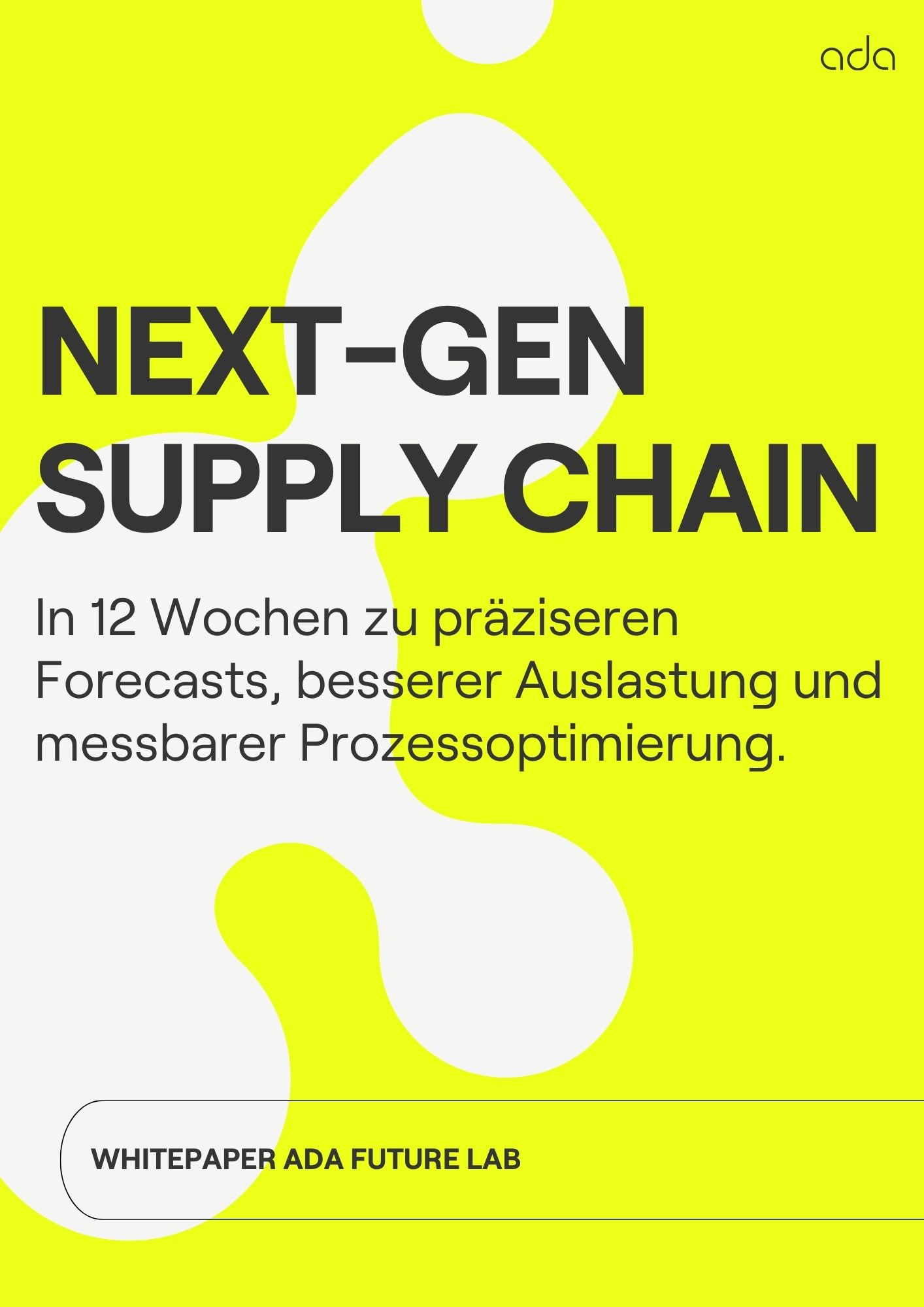Why Traditional Forecasting Models Are No Longer Enough
A leading publicly listed transport and logistics company faced a critical challenge: ship capacity utilization could only be predicted to a limited extent using existing methods.
Although historical booking data and past performance figures were available, these inputs were not sufficient to reliably capture short-term booking trends, seasonal fluctuations, or economic developments.
The result was operational uncertainty and missed revenue opportunities.
As part of an ada Future Lab (LINK) project, the company set a clear goal: to use AI to develop a forecasting model capable of providing more accurate capacity predictions and generating actionable recommendations for managing commercial measures.
This would deliver a forward-looking contribution to optimizing logistics processes and increasing efficiency in global maritime transport.
Focus on Asia–LATAM: A Strategic Route for Logistics Optimization
The project initially aimed to transform the company’s entire logistics operations with AI.
However, to achieve rapid, validated results, ideation workshops narrowed the focus to a single trade lane: Asia–Latin America (Asia–LATAM).
This route exhibited significant booking fluctuations, strong economic relevance, and clear potential for data-driven optimization—making it the ideal pilot project for validating the model.
Optimizing Logistics Processes Through Transparent Structures and Diverse Data
The first step was a thorough analysis and documentation of existing trade management processes to evaluate their suitability for an AI-driven solution.
Harmonizing these processes was critical for building a reliable data foundation and improving internal collaboration.
AI-Ready: Data Integration as the Basis for Automated Decisions
In addition to historical booking data, the team integrated a variety of other influencing factors, including seasonal trends, inventory levels, economic developments, and external market data.
This integration enabled flexible, up-to-date, multidimensional capacity forecasts that go far beyond traditional single-source models.
Developing and Deploying the AI Model for Capacity Optimization
Based on the structured processes and data landscape, the project team built a fully functional Minimum Viable Product (MVP).
The AI model accurately predicted whether a vessel would operate within a defined capacity range.
- In cases of potential underutilization, the system recommended measures such as rate reductions or targeted discount strategies.
- For rising demand, it suggested increasing sailing frequency.
These actionable recommendations were delivered directly to trade management, where they informed day-to-day decision-making—a practical example of how AI can optimize logistics operations.
Early Successes: How AI Delivers Measurable Logistics Gains
The prototype quickly produced concrete results.
- Booking forecast accuracy improved significantly, enabling earlier detection of under- or overcapacity.
- Control measures could be implemented more efficiently, leading to higher ship utilization and improved economic outcomes.
Beyond operational improvements, the project also had a cultural impact.
Acceptance of data-driven decision-making increased noticeably, and the company took a tangible step forward in the digital transformation of logistics.
Key Success Factors: Collaboration, Iteration, and Management Buy-In
Close collaboration between data scientists, business units, and senior management proved crucial.
An agile project structure allowed for fast feedback loops, iterative improvements, and solution-oriented execution.
Additionally, an early and compelling presentation of the model’s potential helped secure internal support and sponsorship.
Scaling Ahead: The Future of AI-Based Logistics Optimization
With the pilot phase completed, plans are already underway to further develop the model by:
- Integrating additional trade routes,
- Incorporating new data sources, and
- Scaling the system into existing operational platforms.
The long-term objective is to embed the AI solution directly into day-to-day logistics operations, unlocking sustained efficiency gains.
This project demonstrates that AI in logistics is no longer a distant vision—it is already a strategic tool for capacity optimization, competitive advantage, and data-driven transformation across the entire value chain.




